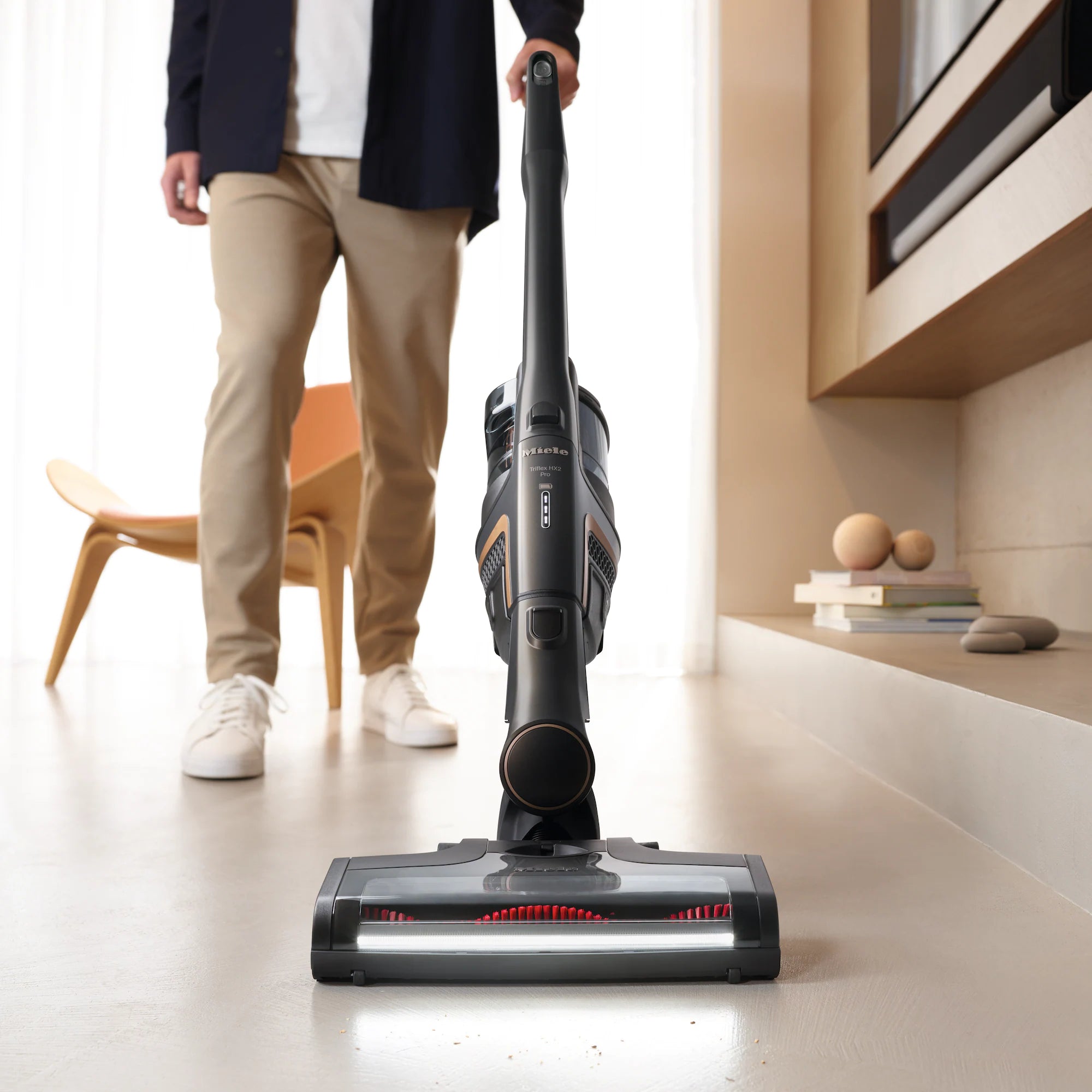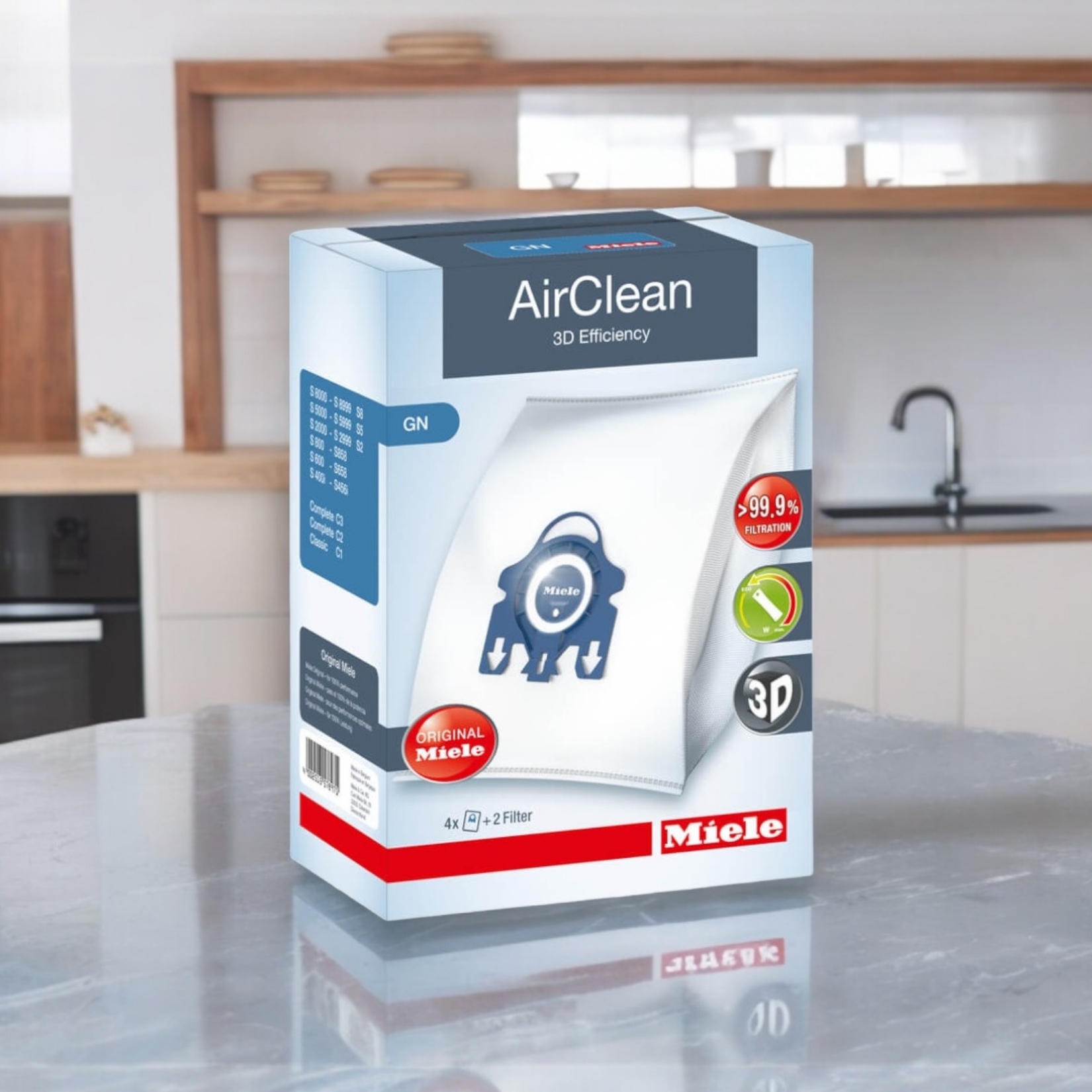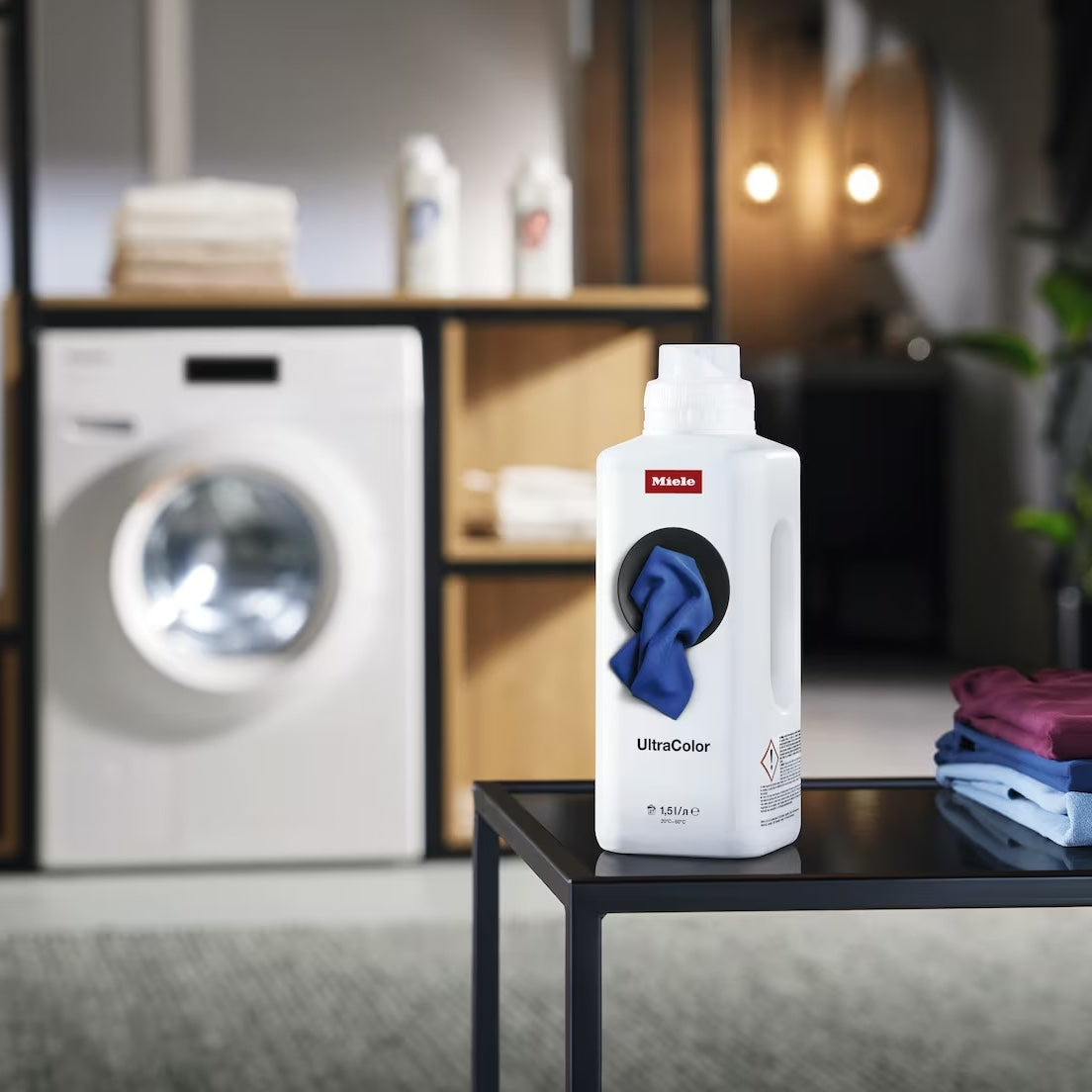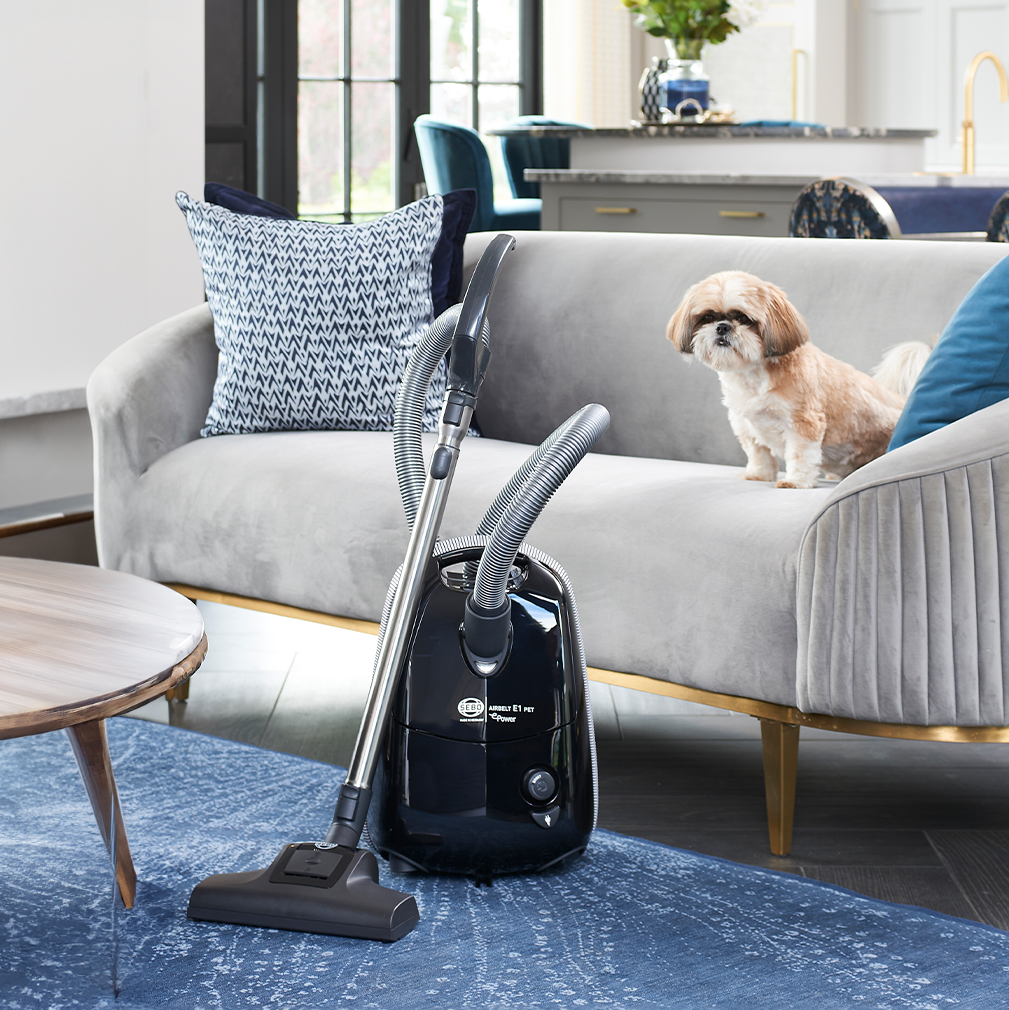A HEPA (High Efficiency Particulate Air) filtration vacuum cleaner is an important tool to minimize the effects of allergens and other indoor air pollutants, whether they aggravate existing conditions or to prevent future health problems. Many Miele vacuum cleaners are chosen for their HEPA filtration.
Because HEPA filtration is so desirable, the term HEPA is used to market a wide variety of vacuum cleaners, and it is often applied in a highly misleading way that can make it difficult to choose HEPA filter vacuum cleaners that will provide the levels of filtration you're buying them for in the first place.
The HEPA filtration specification consists of two numbers that designate a very high level of filtration of very fine particles. The first number represents the filtration efficiency as a percentage and the second number is the particle size retained. For HEPA, filtration efficiency must be 99.97% and particles retained must be as small as 0.3 micrometers (formerly microns).
The phrase “as small as” is important because it means that if all the particles were 0.3 microns in size, the filter would still capture and retain 99.97% of them (usually referred to as “filtration efficiency”). The term “down to 0.3 micrometers in size” does not refer to the same filtration performance, as it may refer to a mixture of particle sizes for the stated efficiency.
The ability to filter very small particles is a very important specification because small particles can easily reach the deepest recesses of the lungs and, according to the U.S. EPA, may cause a wide range of extremely negative health effects, such as aggravated asthma, acute respiratory symptoms including aggravated coughing and painful or difficult breathing, eye, nose, and throat irritation, respiratory infections and chronic bronchitis, decreased lung function, shortness of breath and lung cancer.
And for allergy sufferers, one of the most potent allergens, which is thought to be responsible for a significant percentage of allergies worldwide, is found in dust mite feces, which are generally 10 to 24 micrometers in size and even smaller when disturbed.
To give you some idea of how small these fine particles are, a human hair is approximately 100 micrometers thick. HEPA filtration is designed to capture 99.97% of particles one-third of one micrometer in size.
HEPA filtration is an important and valuable feature to have as part of your vacuum cleaner. So how can you be sure that you are getting true HEPA filtration? Read our HEPA vacuum buying guide to help you decide. Let's start with certified HEPA filters.
The HEPA Filtration Specification
The best HEPA filters are certified to meet stringent standards, such as the European Norm 1822 (also referred to as EN 1822) for filtration performance, and are identified with a certification number. Certified HEPA filters are also known as True or Absolute HEPA filters. European companies often refer to them as S-Class filters.
Originally developed for rating filtration systems for maintaining extremely clean environments in pharmaceutical, computer manufacturing, medical and other clean-critical facilities, certification using this standard assures you that the filter will perform as a true HEPA filter.
The EN 1822 is a two-part test. The first part of the test identifies the particle size that most easily penetrates the HEPA filter, to establish the “Most Penetrating Particle Size” or MPPS.
Once the MPPS is identified, the second part of the test challenges the filter ONLY with particles of the most penetrating size. If a filter can maintain 99.97% filtration under the very worst-case scenario, then you have a filter that delivers true HEPA filtration.
And because efficiency is strongly correlated to the speed at which the air passes through the filter, this test is done using the same rate of airflow as when the filter is in place and the vacuum cleaner is in use.
This is extremely important because all vacuum cleaners operate based on air flowing from the opening at the cleaning head, through the vacuum cleaner and the bag and filter system and then out the exhaust port. It makes sense then that HEPA filtration is achieved when the filter system (a filter or series of filters that can include the dust bag) retains 99.97% of particles as small as 0.3 micrometers.
If a HEPA filter is tested at less than the actual airflow it will be subjected to when the unit is being used, these small particles can simply blow right through the filter into the room air during normal operation. This is one way in which a filter that may actually be HEPA will not deliver HEPA filtration in the real world.
Certifying the Entire System
The next important question is whether or not all the air going into the vacuum cleaner actually passes through the filter system. If air leaks out of the vacuum before it is filtered, some percentage of those lung damaging particles and allergens that have settled on flooring and other surfaces are recirculated into the room air where the extremely light particles can circulate for hours. In this case, vacuuming can actually worsen the air quality in the home.
So not only is a HEPA filter certified using standard EN 1822 crucial, it is also important that the vacuum cleaner be extremely well sealed, so that air does not leak before the filter.
In order to deliver the highest levels of filtration in a sealed system there are now some vacuum cleaner manufacturers that use HEPA filters certified using the EN 1822 standard but they are also certifying the entire vacuum cleaner.
These manufacturers are offering proof positive that no air leaks before the filter and that all air that goes into the unit is HEPA filtered before it leaves.
Therefore, to protect your health and in situations where someone in your home is already suffering with a condition that can benefit from a true HEPA filtration vacuum cleaner, certified vacuums with HEPA filters are the only way to obtain total assurance of HEPA filtration.
This doesn't mean that companies that do not certify the entire vacuum cleaner leak air before the filter but you have to use your judgment. The companies that offer certified HEPA vacuum cleaners also offer high quality models with certified HEPA filtration, even though the entire vacuum is not certified.
Look for heavy rubber seals where the housings come together, as well as other evidence of high quality construction, such as heavy-duty plastic that maintains its structural integrity.
When selecting vacuum cleaners where the whole machine is not certified, be sure that the HEPA filtration is tested and certified using the EN 1822 standard. This is a solid indication that you are dealing with a manufacturer that is serious about delivering true HEPA filtration.
If you choose a vacuum based on anything less than described above, you may or may not be getting HEPA (or anything close to HEPA) filtration. The minimum standard should be that the manufacturer makes a HEPA claim and states the filtration efficiency and particle size retained, so that you can be sure that it is actually the HEPA standard of 99.97% efficiency capturing particles as small as 0.3 micrometers.
Beware Misleading Tactics
Unfortunately, “creative” use of the term HEPA is rampant in the vacuum cleaner industry and we have seen so-called “True HEPA” claims on vacuum cleaners with no efficiency or particle sizes listed. And the rest of the claims they make in their advertising do not come close to true HEPA performance.
True, certified HEPA performance represents some design challenges to vacuum cleaner manufacturers. Creating a sealed system and dealing with the increased levels of airflow resistance of true HEPA filtration while maintaining outstanding cleaning performance require companies to meet very high standards of engineering, design and manufacturing. This is one of the main reasons that these vacuum cleaners cost more than mass-market products.
But a side benefit to products from these companies is that because they are so quality oriented they produce some of the very finest vacuum cleaners available that deliver outstanding cleaning performance and are a pleasure to use.
Some companies also produce very high filtration vacuum cleaners that do not reach HEPA levels, in order to deliver high filtration at a more affordable price. For example, one company offers filtration that retains 99.95% of particles down to 0.5 of a micrometer and 94% of particles down to 0.3 of a micrometer. And, many of these units can be upgraded to a true HEPA filter at any time. These vacuum cleaners can be an excellent value, delivering very high levels of filtration just shy of true HEPA.
Beware of the misleading tactics of many vacuum cleaner manufacturers. Some manufacturers play fast and loose with the term HEPA and make claims such as “traps 100% of dust mites, ragweed and common grass pollens”, with no mention of filtration efficiency or particle size. Manufacturers that make statements like this are counting on uneducated consumers choosing their product based on information that is misleading at best.
The reality is that dust mites do not cause allergic reactions; it is an allergen contained in their fecal material, which is very small. Dust mites themselves are generally about 125 micrometers long and most pollens are between 5 and 50 micrometers in size. These are huge particle sizes and nowhere near as small as the 0.3 micrometers required for true HEPA filtration. And, this claim is also on a machine that claims HEPA filtration but does not list filtration efficiency or particle size.
When evaluating vacuum cleaners that offer advanced filtration below HEPA, once again, look for specific efficiency and particle size ratings as well as a highly sealed housing so you can make an educated decision. If a manufacturer doesn't show these numbers you're better off somewhere else.
And, beware of companies that will state filtration efficiency without a particle size or a particle size without filtration efficiency. One without the other is meaningless.
In summary, filtration of fine particles can really improve indoor environmental conditions for people with allergies, asthma and other respiratory ailments as well as protect the health of everyone in your home.
The very best performance will be obtained by use of EN 1822 certified HEPA vacuum cleaners (the entire vacuum cleaner), followed by high quality, well sealed vacuum cleaners using EN 1822 certified HEPA filters. High filtration but less than HEPA vacuum cleaners made by reputable manufacturers may also be good choices but be sure to look for both filtration and particle size specifications in an extremely high quality product.











